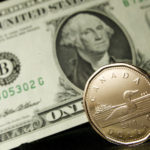 Gold fell for the second time in three days on Friday, as global equities advanced to the strongest level in more than six years, curbing demand for the yellow metal as an alternative investment. However, assets in the SPDR Gold Trust, the biggest bullion-backed ETF, rose 0.4% in February, capping the first monthly increase since December 2012.
Gold fell for the second time in three days on Friday, as global equities advanced to the strongest level in more than six years, curbing demand for the yellow metal as an alternative investment. However, assets in the SPDR Gold Trust, the biggest bullion-backed ETF, rose 0.4% in February, capping the first monthly increase since December 2012.
On the Comex division of the New York Mercantile Exchange, gold futures for settlement in April slid 0.41% on Friday to settle the week at $1 326.40 per troy ounce. Prices touched a session high at $1 333.60 per troy ounce, while day’s low was touched at $1 320.10 an ounce. On February 26, prices touched $1 345.50 per troy ounce, the strongest level since October 30.
The yellow metal settled the week 0.2% higher, after a 0.4% advance in the previous 5-day period. Gold futures are up 10% this year after a rout in emerging markets and signs of slowing US growth, boosted demand for haven assets.
However, the precious metal settled last year 28% lower, the steepest annual decline since 1981 as investors lost faith in the metal as a store of value and amid speculation Fed will continue scaling back its monetary stimulus throughout 2014.
Gold was pressured on Friday after the MSCI All-Country World Index of stocks extended earlier gains to reach the strongest level since December 2007.
“Money is moving to equities today,” Michael Gayed, the chief investment strategist who helps oversee $250 million at New York-based Pension Partners LLC, said in a Bloomberg interview. “There is also some profit taking, but gold will remain supported because of economic concerns.”
Chinese demand
Chinese net-gold imports from Hong Kong, declined to 83.6 metric tons in January from 91.9 tons a month ago.
Higher bullion prices have hurt demand in China, which according to data by the World Gold Council released last week, overtook India as the largest global consumer last year, consuming a record 1 066 tons.
Fed stimulus outlook
On Thursday, Federal Reserve Chair Janet Yellen said before the Banking Senate Commission that central bank’s officials were “open to reconsidering” the pace of reductions in monthly bond purchase, if the economy falters, in contrast with her comments made earlier this month, that US economy has gained enough strength in order to withstand reduction of monetary stimulus. Fed officials next policy meeting is scheduled for March 18-19th.
The central bank announced in December that it will pare monthly bond-buying purchases by $10 billion, after which it decided on another reduction of the same size at the meeting on policy in January, underscoring that labor market indicators, which “were mixed but on balance showed further improvement”, while nation’s economic growth has “picked up in recent quarters.”
Weaker-than-expected US data boosted demand for gold as it spurred speculations the US economy may slow its growth.
The US Commerce department reported on Thursday that durable goods orders, fell by 1% in January, after a revised 5.3% drop in the previous month that was larger than initially estimated. Analysts had expected that bookings for durable goods or those meant to last at least three years will decline by 1.7%.
Orders for durable goods, excluding volatile transportation items, rose by 1.1% in January, confounding experts’ forecasts for a 0.3% drop. Core durable goods orders were revised to a 1.9% decline from a previously estimated 1.6% drop.
However, durable goods orders, excluding defense, decreased by 1.8% in January, after a 3.7% slump in the previous year. Analysts had predicted a smaller decline of 1.2%.
In addition, initial jobless claims rose by 14 000 to 348 000 in the week ended February 22, exceeding analysts’ projections of 335 000 and up from 334 000 a week ago, data by the US Labor Department showed. The higher-than-expected number of Americans that filed for jobless benefits last week, fueled concerns that the labor market recovers unevenly.
Federal Reserve will probably continue to pare stimulus by $10 billion at each policy meeting before exiting the program in December, according to a Bloomberg News survey of 41 economists, conducted on January 10th.
Assets in the SPDR Gold Trust, the biggest bullion-backed ETP, were unchanged at 803.70 tons on Friday, but advanced 0.4% in February, the first monthly increase in 14 months. However, the fund has lost 41% of its holdings in 2013. A total of 553 tons has been withdrawn last year. Billionaire hedge-fund manager John Paulson who holds the biggest stake in the SPDR Gold Trust told clients at the end of last year that he wouldn’t invest more money in his gold fund because it isn’t clear when inflation will accelerate. However, a government report revealed that the owner of the largest stake in the SPDR Gold Trust, kept his holdings unchanged in the fourth quarter of 2013.




